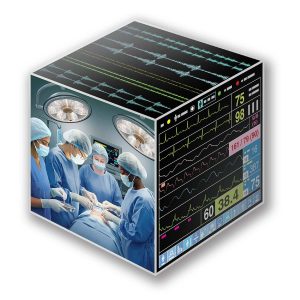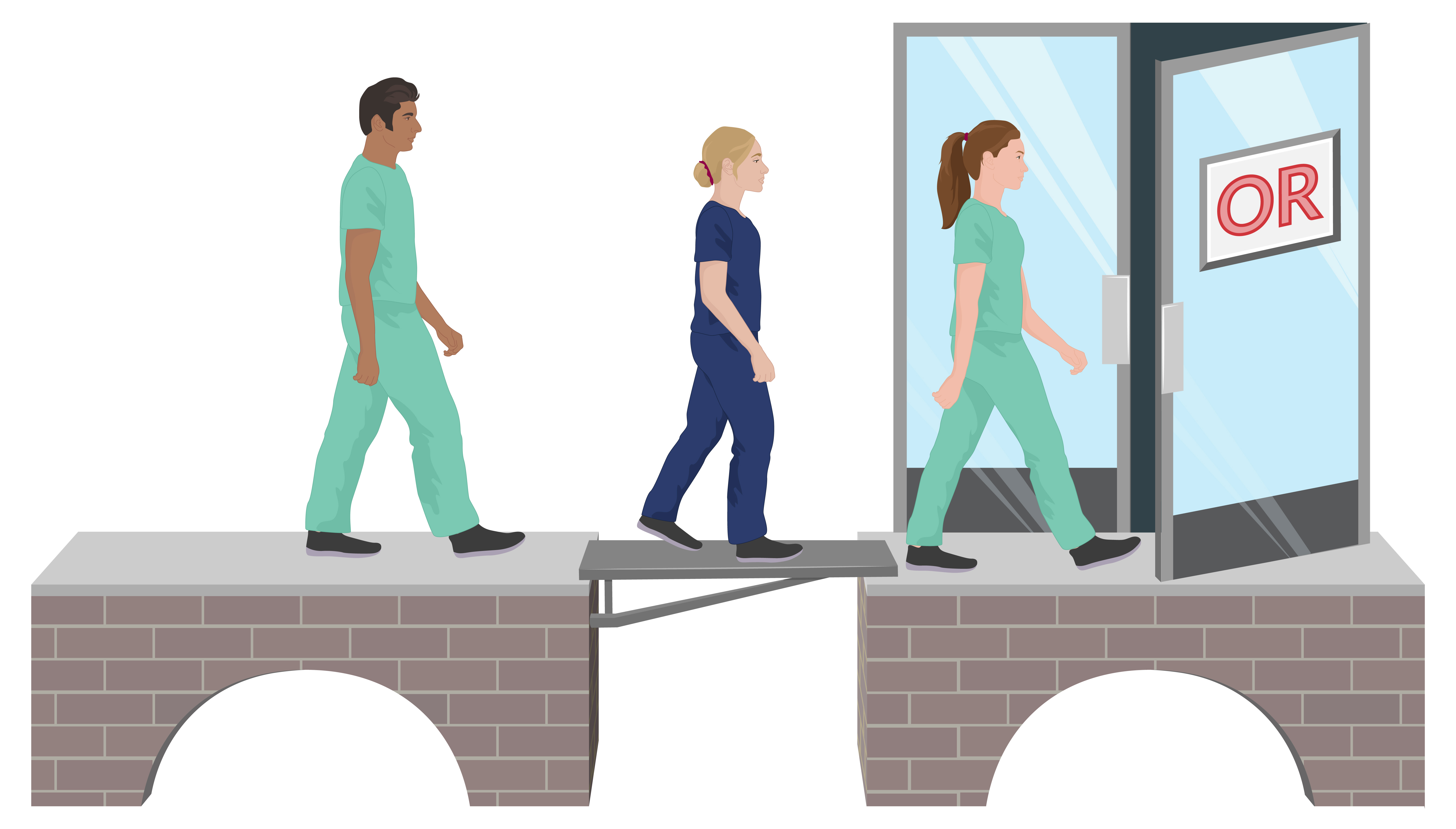Before we take a look at the OR Black Box®, let’s go back to 1954, when an Australian, David Warren, in a thought experiment that would forever change aviation, imagined a highly insulated and protective recording device that would record data, voice communications, and other detectable sounds in the time leading up to an incident. The novel idea became a reality with his prototype, but remarkably, although his invention gained little traction in his home country, it was widely embraced across the globe.
Mandated on all major U.S. aircraft since 1958, Warren’s creation is now known as the “Black Box.” The Black Box is familiar to most of us because it is prominently mentioned in news media reports when an airline incident occurs. A few interesting things about the device:
- Its location is airplane-specific, but generally, it is at the plane’s rear.
- Each can transmit a signal from 14,000 feet deep if submerged.
- It is not black, but rather a bright orange or red-orange, which helps it stand out in crash-site debris.
- After an accident, it is sent to the NTSB in Washington, D.C. for analysis.
- Encapsulated in a cover, it can withstand a fall of 3,400 meters, a pressure of 5,000 psi, and temperatures of more than 1,000 °C.
Table of Contents
Surgical uncertainties: when teamwork fails the patient
We work in one of the most complex environments on planet Earth, where, when things fail, they tend to fail in equally complex ways. From years of retrospective studies, case reports, surveys, and multidisciplinary expert analysis, we know that communication failure, lack of situational awareness, and technical errors link teamwork deficiencies to poor surgical patient outcomes. It is further complicated because of the different disciplines represented in the surgical team, ours being one of them.
The OR Black Box® technology, in the spirit of aviation’s black box, is a tool that records detailed information from the whole surgical environment using audio, video, physiological, and environmental data. It is used for research, team training, education, quality assurance, and improving patient care with artificial intelligence (AI) assistance. The OR Black Box® is designed to collect comprehensive, real-time, and accurate information about what is happening in the OR without human observer presence. The platform includes room cameras, audio recording devices, laparoscopic camera links, and special sensors to capture patient physiology and environmental factors like noise and temperature. The video equipment involves a high-definition camera that records a 180-degree view of the surgical arena and highly sensitive, strategically placed microphones that capture what each team member says throughout the case.

A significant motivator for the OR Black Box® was the admission—based on research and analysis—that despite years of practice interventions, policies, safety alerts, and mandatory training, there had not been a substantial reduction in surgical patient safety events. While that may surprise you, this is borne out in the surgical safety literature, the consensus being that it was time to do something different. The OR Black Box® is a product of Surgical Safety Technologies, Inc., NY. While the company suggests that the technology should be in every OR, concerns exist beyond the obvious expense, resources, logistics, and the need for more research demonstrating efficacy.
As you might surmise, the existing literature regarding clinicians’ views of the OR Black Box® reveals considerable variability, especially with how it might influence daily clinical practice. Some takeaways from looking at the literature follow, where respondents:
- suggested that they would do their job as always and use the generated reports to improve their practice.
- reported significant concerns that it would be a distraction, which might paradoxically generate practice mistakes.
- agreed that the technology would catch on with many, likely be widely embraced, and have the potential to advance surgical patient safety.
- suggested that it implied the institution lacked trust in their staff.
- expressed concerns about it causing case delays, creating punitive consequences for staff, and stoking medicolegal suits. These were especially concerns of surgeons.
- noted a range of emotions, including feeling excited, unconcerned, worried, scared, or threatened by what it might mean for them.
It should be noted that the system’s software immediately anonymizes all providers by blurring their faces and bodies, and all data is erased after 30 days. If you are unfamiliar with the OR Black Box®, it is important to appreciate that it isn’t a box but an array of sensors and data recorders with its associated software. The data that it captures permits robust analysis by experts and artificial intelligence. It’s designed not to be seen but to blend seamlessly into the fabric of the OR.
A changed perception?
We first became aware of the OR Black Box® around 2010 and admit that it conjured up visions of Big Brother, medicolegal concerns, and not encouraging communication, but instead stifling it. Our bias was amplified by learning about its first U.S. installation in an OR in New York, where things did not go as planned. There was sabotage (cameras unplugged), staff stopped talking during cases out of concerns of being recorded, providers did not want to work in the room, and no one wanted anyone, let alone a computer, critiquing their every move. Scheduling cases and staff to the room became a daily challenge.
We followed reports of it, thinking it might vanish like Johnson & Johnson’s automated anesthesia delivery system, Sedasys. Yet, as more and more institutions worldwide adopted the OR Black Box®, publishing their experience with it, our view evolved, seeing merit in the enterprise. We read reports of surgeons being too rough or incorrectly holding an instrument, and anesthesia providers not informing the surgeon of important changes in the patient’s condition. We learned that team members were not compliant with protocols during crises, high levels of distracting noise (in one report, a median of 138 times/case), and the too frequent opening and closing of OR doors, just to mention a few. The MIT Technology Review gave the approach a very favorable endorsement. We even spoke to two CRNAs working in Western and Midwestern institutions that use it.
Providers tended to be humbled by seeing reports of themselves in action. Surgeons operating in a pedestrian manner, anesthesia providers with poor form during routine skill-based tasks, circulators with lapses in hand hygiene, etc. It made us think of the proverbial question directed at a surgeon or an anesthesia provider when asked, “Who are the top three in your field?” Their standard reply comes back quizzically as “Ah…..who are the other two?” That view tended to wither as humility, learning, self-reflection, and prioritizing team interactivity emerged with its use, reported by institutions now numbering in the dozens.
A final comment
While our view about the OR Black Box® continues to evolve, it is not our intent to bias yours regarding this approach to surgical patient safety. Rather, we hope we’ve encouraged you to reflect on it and, if it comes to your OR, be prepared to have an open mind about its potential to impact the world we work in.
Elevating surgical care begins with awareness. Advance your expertise through APEX’s CRNA continuing education.






